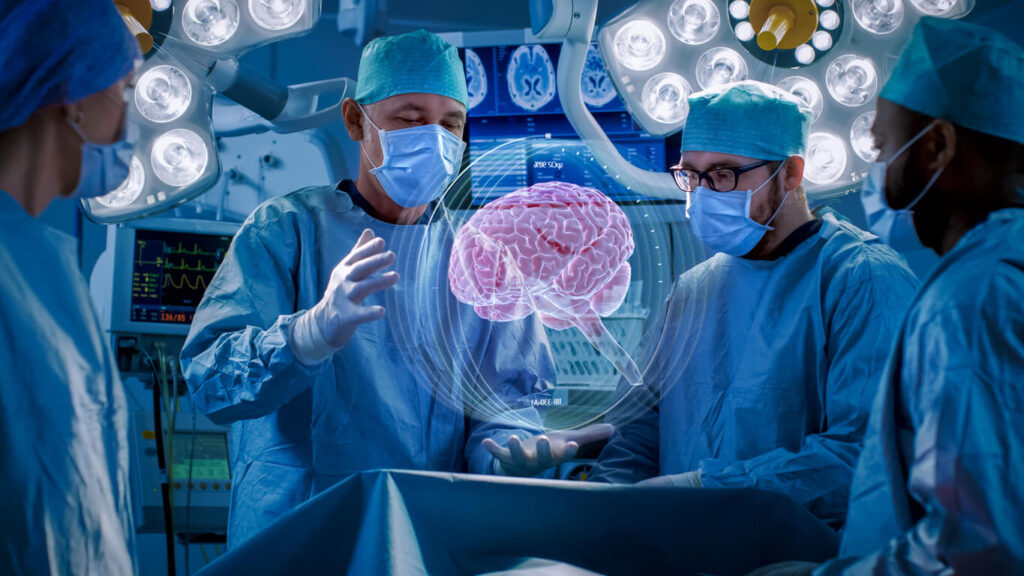Brain tumors, whether benign or malignant, can have a significant impact on a person’s health and quality of life. They can cause symptoms like headaches, nausea, vision problems, and even cognitive changes. Thankfully, advancements in medical technology and surgical techniques have made it possible for neurosurgeons to safely remove brain tumors and improve patients’ outcomes. At Awesome Grace Hospital, our team of skilled neurosurgeons is dedicated to providing patients with the best possible care to improve their quality of life through brain tumor surgery.
Types of Brain Tumors
Brain tumors can be classified into two main types:
- Primary Brain Tumors: These tumors originate in the brain and can be either benign (non-cancerous) or malignant (cancerous). Primary brain tumors can occur at any age and may cause a variety of symptoms depending on the tumor’s location.
- Metastatic Brain Tumors: These tumors are the result of cancer spreading from other parts of the body to the brain. While less common than primary brain tumors, they can be more challenging to treat because the tumor may have already spread to other areas.
Both types of tumors require immediate attention to prevent further complications and to improve the patient’s long-term prognosis.
Brain Tumor Surgery: How It Works
Brain tumor surgery is often the first step in treating brain tumors, especially if they are causing symptoms or are at risk of spreading. The goal of the surgery is to remove as much of the tumor as possible while minimizing damage to healthy brain tissue.
- Minimally Invasive Techniques: Surgeons use advanced imaging techniques, such as MRI and CT scans, to map the brain before surgery. This helps them plan the best approach to removing the tumor with minimal damage to surrounding tissues.
- Craniotomy: In many cases, a craniotomy is performed, which involves removing a small section of the skull to access the tumor. This allows the neurosurgeon to remove the tumor directly. After the tumor is removed, the section of the skull is replaced, and the incision is closed.
While brain tumor surgery can be complex, it is often the most effective way to treat a tumor and prevent it from growing or spreading further.
Post-Surgery Recovery and Rehabilitation
After brain tumor surgery, recovery can take time and varies depending on the size, location, and type of tumor. Some patients may require additional treatments such as radiation or chemotherapy, particularly if the tumor was malignant. The recovery process also depends on the extent of brain tissue affected by the surgery.
- Hospital Stay: Most patients remain in the hospital for several days after the surgery, where doctors will monitor their progress and manage any complications.
- Physical and Cognitive Rehabilitation: In some cases, patients may experience challenges with motor skills, speech, or memory after surgery. Physical therapy, occupational therapy, and speech therapy may be required to help regain lost skills and adapt to any changes.
How Brain Tumor Surgery Improves Life
The primary goal of brain tumor surgery is to alleviate symptoms and improve the patient’s quality of life. By removing the tumor, patients often experience relief from pressure on the brain, which can reduce symptoms like headaches, nausea, and dizziness. In cases of benign tumors, surgery can be curative, meaning patients may be able to return to their normal lives after recovery.
For patients with malignant tumors, surgery is often part of a larger treatment plan that may include radiation, chemotherapy, and other therapies to fight the cancer. Though the journey can be challenging, brain tumor surgery offers hope for improved health and a better quality of life.
At Awesome Grace Hospital, our neurosurgical team is dedicated to helping patients through every step of their brain tumor treatment, from diagnosis to post-surgery care and rehabilitation.




I really appreciate, this write up.
Kudos to the medical Team of Awesome Grace Hospital